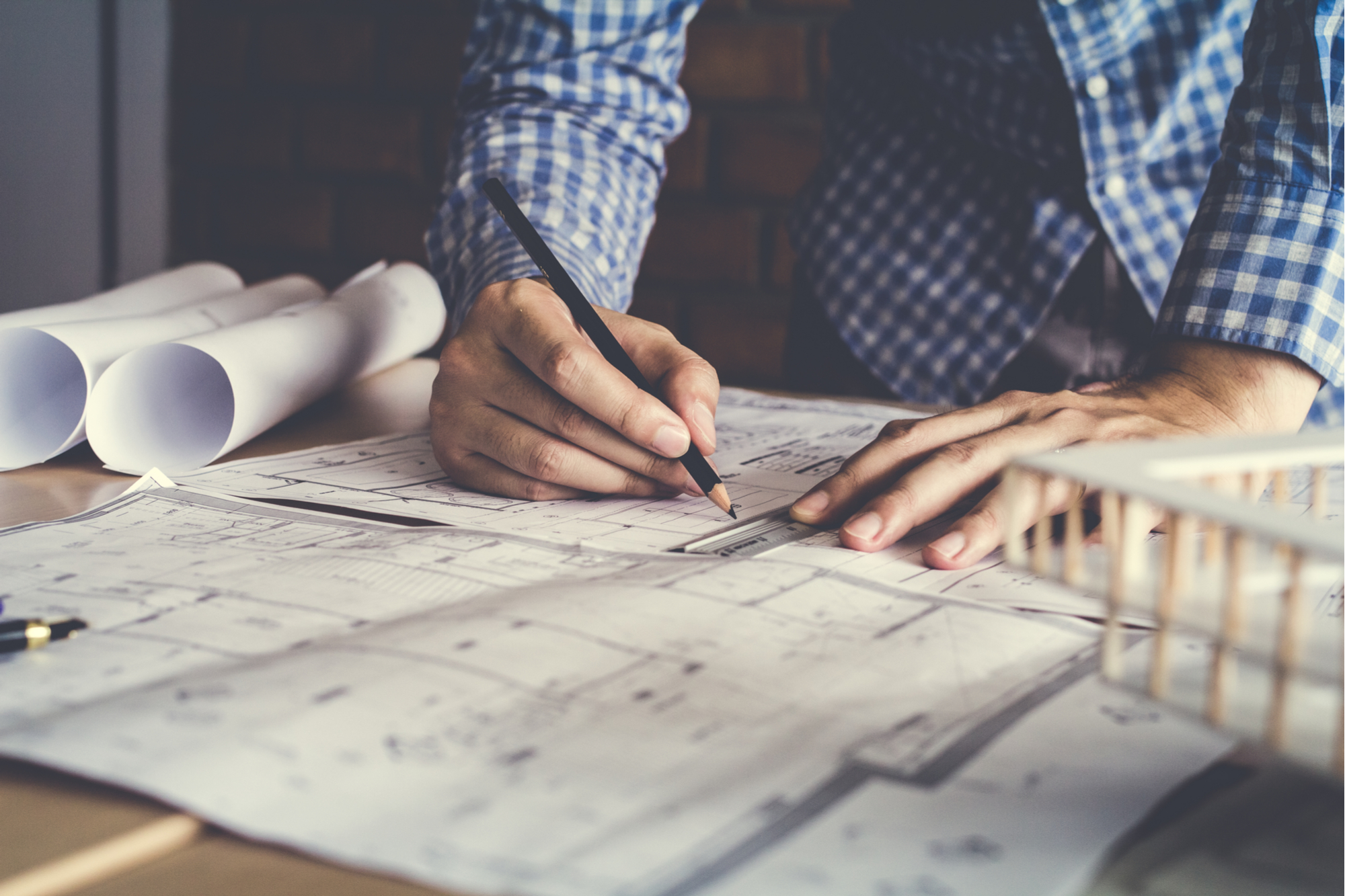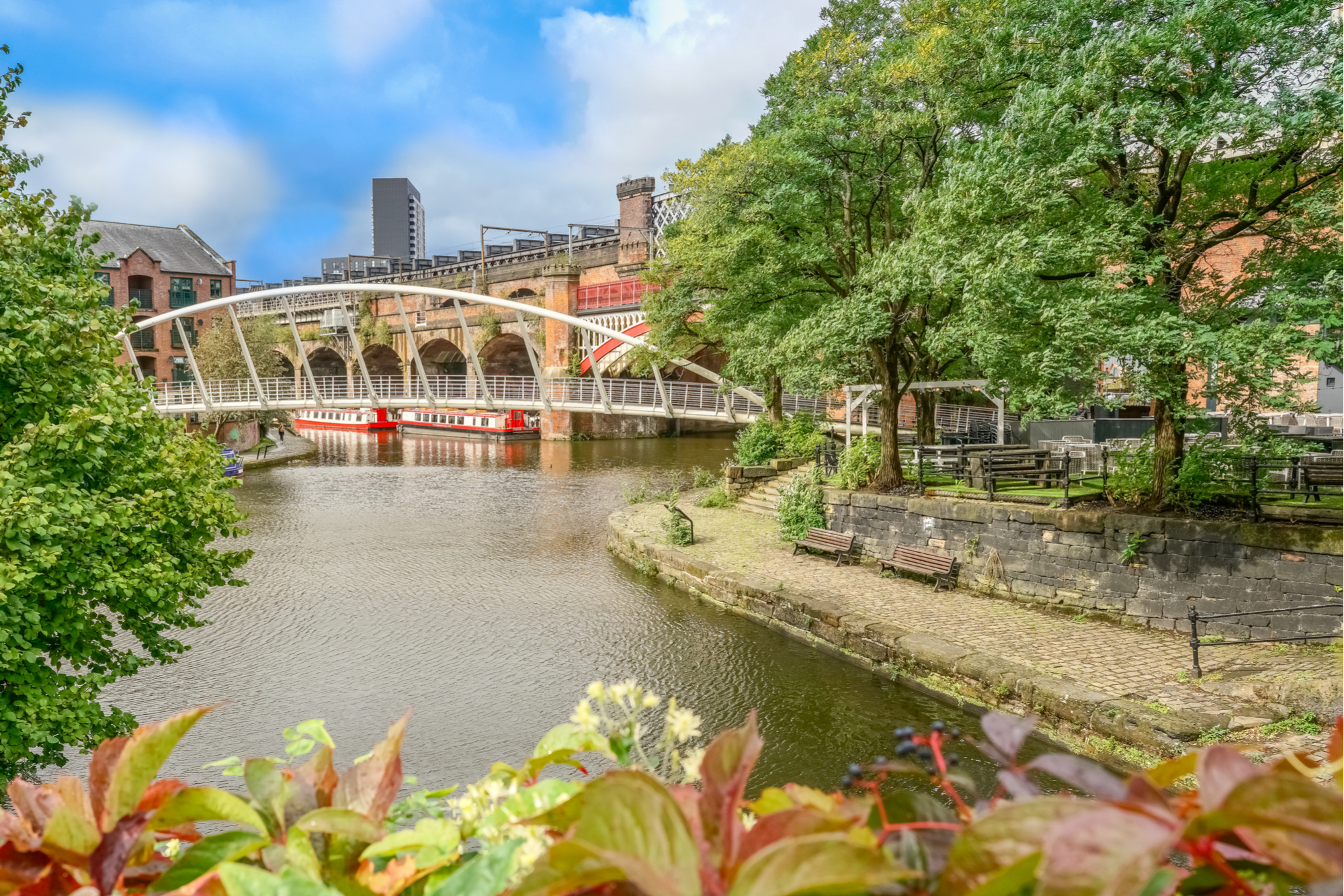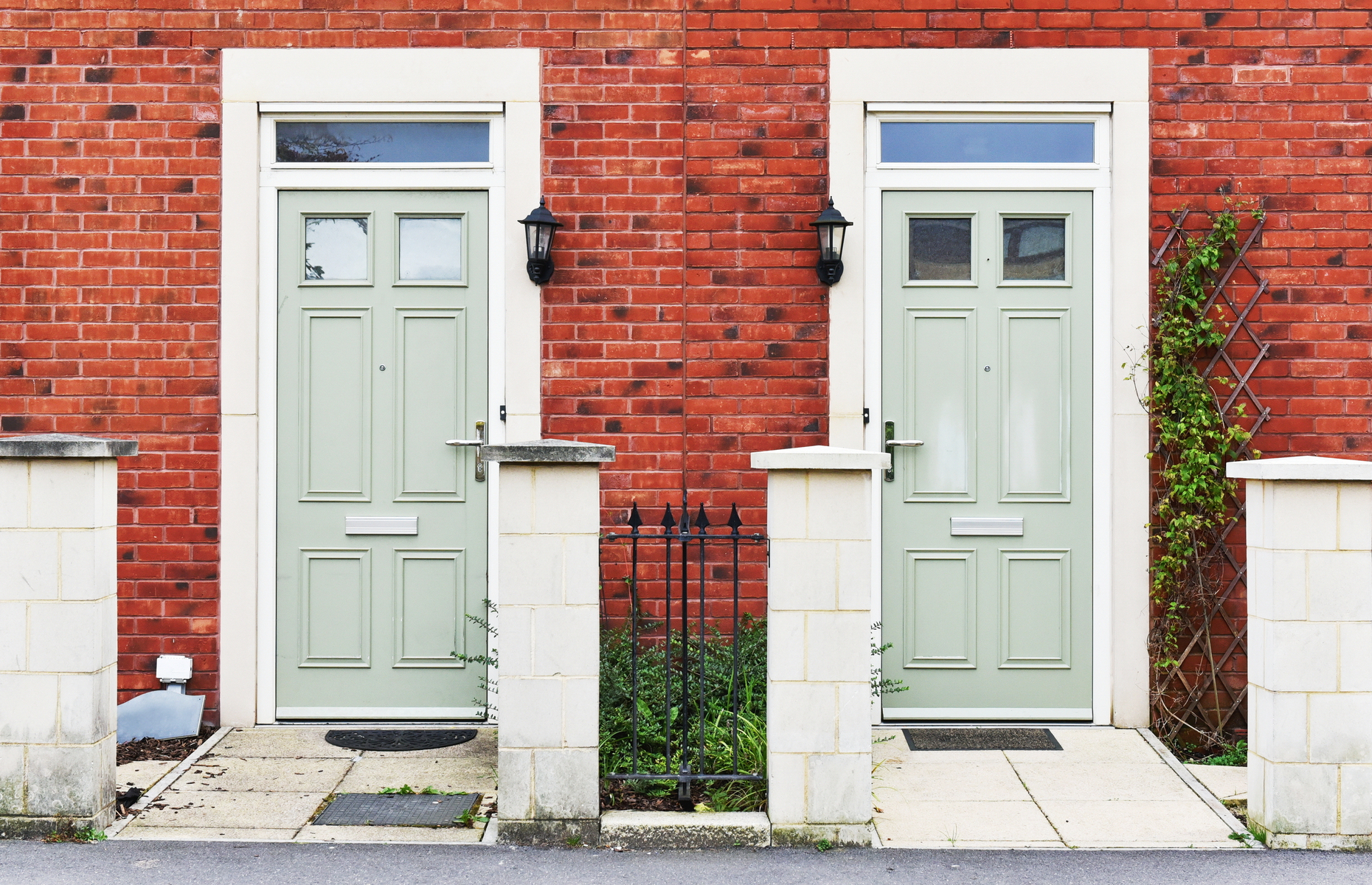Planning permission: How to make a successful application
Gaining planning consent for your new home is a critical part of building or renovating a property. Here's how you can make a successful submission and take one step closer to bringing your dream home to life
Do I need planning permission for my self build or renovation?
For some homeowners, the road to gaining planning consent is confusing to navigate. Many people are unsure exactly what home improvements require planning permission in the first place. According to data from Toolstation, 56% of homeowners believe consent is needed to build a single-storey extension, while 42% think they would need to make a planning application to construct a conservatory. In fact, in the majority of cases, planning consent isn't required for these projects.
It's true that most, but not all, major building works require planning permission, including self builds, some renovations and sizeable extensions. Minor external changes to a property and internal alterations are usually exempt, and numerous projects, including some single- and double-storey extensions, loft conversions and the erection of outbuildings, can be carried out under what’s known as permitted development (PD). But if you're building a property from scratch, you can safely assume that you’ll need to obtain full planning approval to create your dream home.
If you've already found the perfect plot, the first thing to consider is whether the principle to build a new dwelling on this site has already been founded. “If you’re going down the route of buying a plot that already has outline planning permission to develop a new house, the principle to build has been established,” says Carl Huntley, managing director of Base Architecture + Design. “The key thing to do then is to get hold of the planning application documentation and the approval so you can understand what the conditions surrounding the build are.”

Many people are confused as to what renovations require planning permission. Image: ronstik / Shutterstock
For would-be self builders considering a plot without outline planning consent already attached, the process is more complex. “An in-principle application will need to be put forward on that piece of land, and there will be quite a few issues that bubble up. Ecology, drainage, highways and the notion of building itself will all need to be addressed,” says Carl.
If you fall into the latter camp, examining the council’s Local Plan is often a good place to start. “Look to see if the Local Authority has a design guide, as these can often give prescribed minimum separation distances to consider, which will ensure the plot is sufficient in size,” says Arron Breedon, planning director at Clear Architects. “It’s also worth checking the nationally described space standard for internal dimensions requirements and Local Plan policies for minimum external space standards.”
Other factors to consider will be restrictions regarding privacy and whether your plot is situated within a designated zone such as the Green Belt or a Conservation Area – but more on this later.
Outline and detailed planning permission
As a first step, it’s useful to understand the difference between outline and detailed planning consent. Outline consent is simply a declaration that establishes the principle of what can be built on the site, covering basic elements such as the layout of the property and its scale. However, detailed or full planning permission (also known as planning approval) is required to actually build the house. This covers aspects such as the design of the dwelling, materials, layout, access, parking and drainage setup.
When it comes to carrying out site surveys and creating the drawings that will support your application, you’ll need to bring in an architect or professional designer to coordinate the process for you. Need help managing your project? Check out the full guide.
Many self builders and renovators choose to hand the planning application over to their chosen professional entirely, as they will be better placed to understand the intricacies of local planning policy and present a well-considered application based on that. You can find a RIBA-chartered architect in your area here.
 Enlist an architect or designer to create documents for your application. Image: Akira Kaelyn / Shutterstock
Enlist an architect or designer to create documents for your application. Image: Akira Kaelyn / Shutterstock
“You need a topographical survey to show the extent of the site and the levels that sit on the land so drainage can be calculated,” says Carl. A Flood Risk Assessment, Transport and Accessibility Justification and acoustic surveys may also be required.
“If there are trees on site, whether they have a Tree Preservation Order on them or are within close proximity to the project, an Arboricultural Report may be necessary,” says Jen Morrison, an architect at DMW Architects. “Biodiversity and ecology may also be important, depending on the site. A phase 1 biodiversity survey will be required, undertaken by an ecologist, to assess the plot for protected species. Further assessments may be required if any protected species, such as bats, badgers, newts etc are detected.”
Your architect should be able to act as a lead consultant to coordinate all the necessary professionals to carry out the surveys. In order to put together the application for you, his or her fees will vary depending on the complexity of the site, the brief and the design the client wants to achieve. “For a normal four or five-bedroom home, the drawings for a detailed planning application could cost anywhere between £2,000 and £4,000, depending on the level of design the client is looking for,” says Carl.
How to make a planning application
Your planning submission can be made to your local district, borough or city council. The simplest way to submit the application is online, via the government’s Planning Portal.
You’ll need to fill out a form with all the required information about your project, supply drawings and any additional reports associated with your application. You can browse the list of necessary documents on the Planning Portal.
A fee is also required to make a planning application, which varies depending on where you are in the UK. In England, the cost to submit a planning application for a new dwelling currently stands at £462 – a guide to the fee structure can be accessed here.
If you’re making improvements to an existing property, applying for permission to build an extension (in England) costs £206. Applying for consent to build an extension would cost £230 in Wales and £300 in Scotland.
However, Housing Secretary Michael Gove's Levelling-up and Regeneration Bill, which is on the brink of being passed, is likely to shake up the planning system in the near future. Some of the bill's impending reforms have already been made public, including the introduction of the so-called 'Street Votes' system, which will allow residents to vote on local developments that could affect their area.
This could make the planning application process somewhat more involved for homeowners. Proponents of the initiative argue that it will hand control of development back to local communities, while critics say the system could hinder development and exacerbate the UK's backlog of new homes.
Planning restrictions for self build homes
There’s a myriad of restrictions to be aware of if you’re building a new home, perhaps most notably those relating to protected areas such as the Green Belt, Conservation Areas (CA) or Areas of Outstanding Natural Beauty (AONB). Close proximity to listed buildings may also influence the scope of what you’re able to achieve.
“If you’re building in a CA, good design and materials are everything,” says Arron. “The right architecture practice with planning expertise will bring forward a model that relates to its surroundings without necessarily copying.” According to Arron, imitating the surrounding architecture is not always the best way forward. “This strategy only maintains a CA, while good quality design that relates to its surroundings can enhance the zone and is popular with planners."
Building in a Green Belt area is potentially more problematic, as you’ll have to prove that you’re not causing harm to the protected zone. Each designated area will have its own set of policies attached to it, which you’ll need to reference in your planning application. However, if your proposal will not benefit the protected land then the local authority will be obliged to refuse your application.
While building on Green Belt is challenging in terms of planning, it’s not necessarily impossible. Paragraph 79 (formerly known as Paragraph 55, until July 2018) is a special clause in national planning policy under which houses of excellent design can be built in areas of open countryside. According to this part of the National Planning Policy Framework (NPPF), homes of “exceptional quality or innovative nature of the design” can be erected on countryside plots that would otherwise be considered unsuitable for development.
However, this route to obtaining consent doesn’t come without challenges, as the design scheme will need to be outstanding. According to the guidelines, it should also enhance the immediate surroundings and respond sensitively to the defining qualities of the surrounding area.
Nearby listed properties are another factor to be aware of when making your planning application. “Building within the curtilage of a listed dwelling will also require listed building consent, an application that runs alongside your planning application,” says Jen. “Sometimes the support of a heritage consultant can be invaluable here, especially when dealing with tricky conservation officers.”
 Castlefield is an inner city conservation area in Manchester. Image: Ugis Riba / Shutterstock
Castlefield is an inner city conservation area in Manchester. Image: Ugis Riba / Shutterstock
Planning restrictions for renovations
Depending on the key goals of your refurb, there’s a lot that can be achieved under permitted development rights, without the need to apply for formal planning consent. A good architect will be able to help you maximise these allowances. However, for peace of mind, it’s still worth obtaining a Lawful Development Certificate before you make any changes to the house, just to ensure the works are legal.
If you’re planning to enlarge your home as part of the renovation, it’s worth knowing that a variety of extensions (single- and multiple-storey) and conversion projects (including lofts) fall under PD allowances, too. Homeowners in England are able to extend to the rear of their houses by up to eight metres for detached houses and six metres for all other permanent homes.
Exceptions to PD guidelines apply if your house is listed or situated within a designated zone, such as a Conservation Area or an Area of Outstanding Natural Beauty. If your home falls into any of these categories, you’ll need to make a full planning application for the renovation works. Designs that are more dramatic externally have a greater risk of being refused by the local authority. In order to keep things simple, one option would be to try and keep the exterior style of the house in keeping with that of the existing property and make the bulk of your changes to the interior (which won’t require planning consent).
Remember, alterations to listed buildings will also require listed building consent – in addition to planning approval. The support of a specialist heritage buildings consultant can be invaluable when making an application for alterations to a listed property.
Before submitting your scheme to the local council, see if any similar projects (renovations, extensions or basement and loft conversions) have been carried out on your street. These could provide a precedent to support your application. But remember, they will need to have been approved under current planning law.
READ MORE: How to renovate an old house – a beginner’s guide to fixer-uppers
Getting pre-application advice from your local council
Seeking pre-application (or pre-app) advice is a good way to test the waters with your local planning department before submitting a formal application. One of the key benefits of the pre-app process is that it is private – so anyone can do a pre-app before they commit to buying a piece of land or property without the existing landowner knowing.
Individual councils will determine the level of detail that you’re required to submit for pre-app advice, plus set the cost of the consultation and how long it takes to get feedback.
For smaller projects such as extensions and alterations to existing homes, you can sometimes book free pre-application consultations, however, for larger projects (including self builds) a fee is usually involved. This varies from council to council but is usually in the region of £50-£200 for a meeting and follow-up letter. However, in complex cases, this can amount to more than the £462 that's paid for the formal planning application itself.
While obtaining pre-app advice is not essential, it can be extremely helpful in putting together a design that is more favourably received by the local authority. “If you’re about to spend your life savings on a dream home, it’s vital to get it right. The cost of putting together a planning application can appear high to some, but this money is well spent as it will inform the quality of the proposal,” says Arron from Clear Architects.
Essentially, the process involves submitting details of your proposed scheme to the local council. They will then be able to provide feedback that highlights any possible areas of concern. “Officers often see the pre-application as a proactive step, and take it into account during the planning process,” says Jen. “But remember it is informal. Even if the planning officer is initially supportive during pre-app, there may be other issues and concerns raised later on that could throw a spanner in the works.”
The Party Wall Act and winning over the neighbours
 Be sure to keep neighbours informed when you undertake building works on your property. Image: 1000 words / Shutterstock
Be sure to keep neighbours informed when you undertake building works on your property. Image: 1000 words / Shutterstock
Getting your neighbours on side can be a key part of the planning process. “Most objections come forward when people aren’t aware of what is being proposed,” says Arron. Therefore, it pays dividends to keep your neighbours informed from the start as to what you’re planning. Keep the lines of communication open and be clear about the scope of your project, as well as the impact it may have on them.
“Be approachable and make time to answer any questions they may have in order to avoid conflict. Often it’s the little things that make a big difference, such as contractors’ vans being parked inconsiderately or starting work on site too early – especially at the weekend!” says Arron.
Maintaining a good relationship with your neighbours is particularly important in cases where shared boundaries are involved. Depending on your scheme, you may need to bring in a Party Wall Surveyor. “The Party Wall Act is there to protect both you and your neighbour(s),” says Jen. “Therefore, having the relevant professional involved is essential when there are shared boundaries, and the neighbour is concerned any proposals will physically affect their property."
How to deal with planning rejections
Planning decisions should be made in accordance with local development policy, however, if your proposal is rejected by the local authority, they must provide reasons why.
“Hopefully, you’ll avoid this situation if your architect is making regular check-ins with the planner to direct the application as best as possible,” says Arron. “It’s imperative to highlight how the proposal complies with the council’s policies and standards from the start, as this greatly enhances the chances of success at the application stage.”
You or your architect can discuss the details of the refusal with the relevant planning officer to ascertain whether there’s any other route forward, or if a fresh design approach will be required.
If there are sufficient grounds, you may be able to appeal the decision. In this instance, the case will be taken out of the local authority’s hands and handed over to an independent government inspector. “This strategy is worth considering,” says Arron. “It’ll take a little longer to obtain a final decision but can help circumnavigate a council that’s not on the same page.”
If you end up making a fresh application, bringing in a specialist planning consultant could be a wise move. They will be able to address some of the policy issues and demonstrate accordance in any subsequent submissions. “Remember, the next application will be free if it’s within 12 months of the previous refusal,” says Jen.
Planning law is a vast and intricate subject, and it’s worth bearing in mind that local development policy varies significantly from area to area. Unsurprisingly then, different regions have different approval rates for planning applications.
According to data gathered by Toolstation, who submitted FOI requests to councils across the UK, Lincoln in the East Midlands has the highest success rate. 96% of planning requests were approved in the city for the period between 2020 and 2022. Edinburgh came in a close second with a 95% approval rate, and 94% of requests in Salford, Manchester, Nottingham, Norwich and Derby were granted.

Lincoln has the highest planning permission success rate in the UK. Image: Gerry Burrows / Shutterstock
Meanwhile, aspiring self builders and renovators in other areas of the country weren't quite so fortunate. 22% of planning requests were declined in Swansea in the same time window, while Luton (21%) and Burnley (18%) both had significant rejection rates too. Some of the most common reasons behind these unsuccessful applications were:
- The work involved a listed property
- The property was located in a protected area
- The building would overlook a neighbouring property
- The building would restrict the light of a neighbouring property
- The work would impact local trees.
While the road to gaining planning consent can feel arduous, success is within your grasp if you're armed with the right information. Getting a firm grip on the basics and your local area's planning policy from the outset of your project should enable you to navigate the process effectively. Don't be afraid to bring experts on board to help out where needed, too.
READ MORE: How to build your own house: A self build beginner's guide
Featured image: 25fps / Shutterstock
Browse the self build A-Z:
- Buying land to build on: a beginner's guide
- Flat-pack tiny homes you can build in a flash
- Glass doors and window styles: glazing options for your self build
- Hempcrete, bamboo and cob: 9 eco home building materials that are better than concrete
- How I built my dream home for just a few thousand pounds
- How to build a house with integrated smart home tech
- How to buy property at auction
- How to design your own home
- How to find the perfect self build plot
- How to make a successful planning application
- How to project manage your self build
- Inspiring self built homes on a budget
- Passive houses around the world that cost nothing to run
- Self build mortgages: What do you need to know?
- Step inside this modern self build on the Welsh coast
- The world's most incredible self built homes
- This couple built their tiny house on wheels for just $15k
- This incredible eco-home was built in only 3 days
- We built our dream home in our back garden
- What it's really like to live in a Grand Designs house
- Which self build structural system should I choose?
- 5 ways to finance your self build home
- 7 stylish ways to design your interior floor plan
- 8 ways to get the best from your builder
- 10 amazing package homes that take the graft out of self build
- 10 questions you should always ask your architect before starting a project
Comments
Be the first to comment
Do you want to comment on this article? You need to be signed in for this feature
